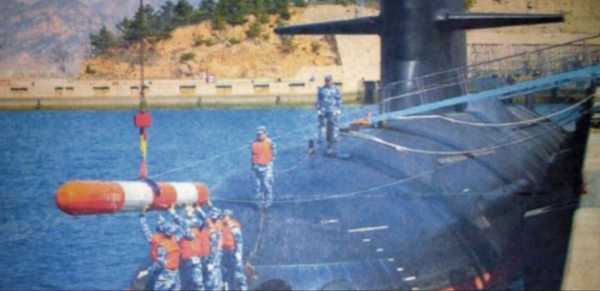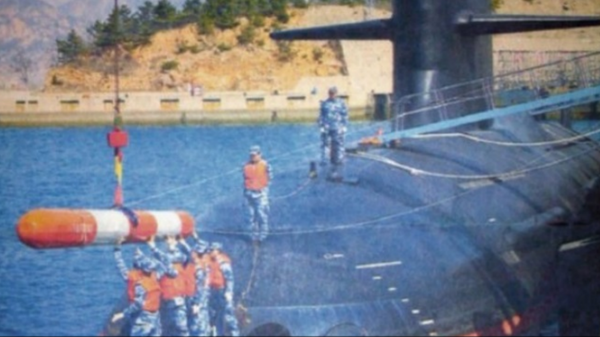In recent years, China’s People’s Liberation Army Navy (PLAN) has seen a significant boost in funding and development projects. China’s first aircraft carrier, the Liaoning, entered production, and a number of destroyers and frigates were added to its fleet.
PLAN has also seen an extension of its submarine program, and on Tuesday, a new image of the nuclear-powered Type 093 submersible emerged on the Chinese internet.

The Shang-class vessel appears to feature vertical-launch shafts that could fire both YJ-18 anti-ship cruise missiles and DF-10 long-range land-attack cruise missiles, according to defense site IHS Jane’s.
The Type 093 will likely replace China’s aging Type 091s, originally commissioned in 1974.
Beijing’s renewed focus on its navy is said to be due to increased tensions in the South China Sea. The United States and its Pacific allies have expressed opposition to China’s construction of artificial islands in the Spratly archipelago, claiming it's part of an attempt to establish an air defense zone.
Beijing maintains that is has every right to build within its own territory and that the island will be used primarily for humanitarian purposes.
The Pentagon has been upgrading its own submarine fleet, currently building Virginia-class attack sub USS South Dakota.
"America’s superiority in undersea warfare is the product of decades of research and development, a sophisticated defense industrial base, operational experience, and high-fidelity training," reads a report released by the Center for Strategic and Budgetary Assessments released last year.
"This superiority, however, is far from assured."
A highly-contested waterway through which roughly $5 trillion in trade passes annually, most of the South China Sea is claimed by China, though there are overlapping claims by Brunei, Taiwan, Malaysia, Vietnam, and the Philippines.
The United States has no territorial claims in the region.



